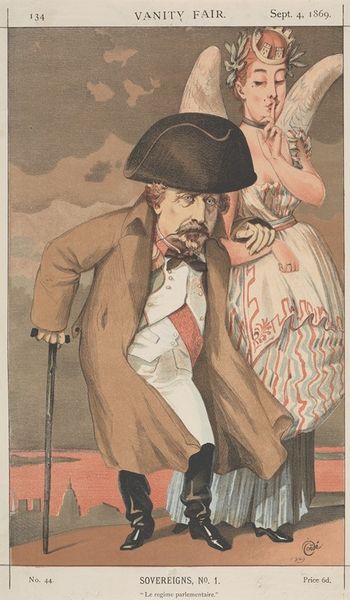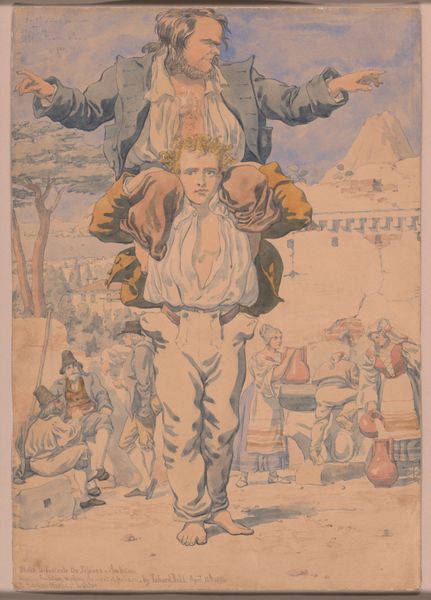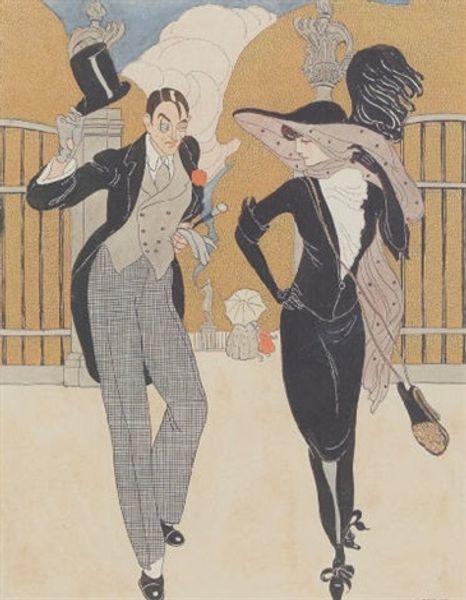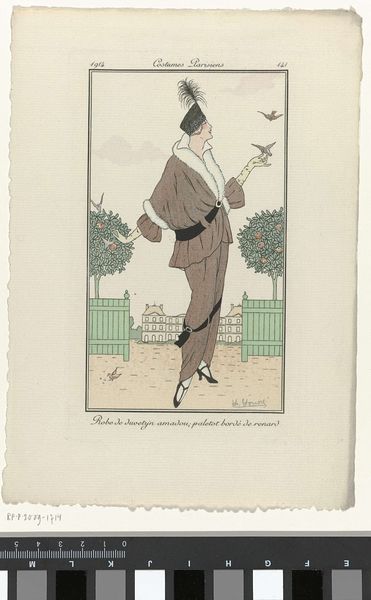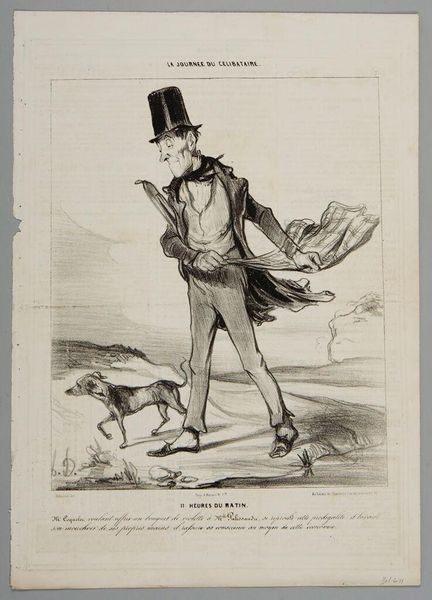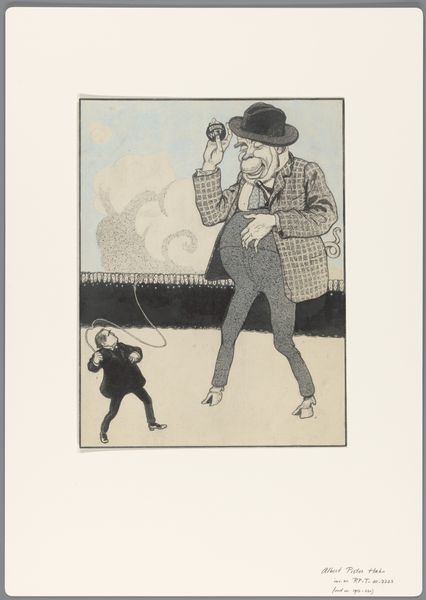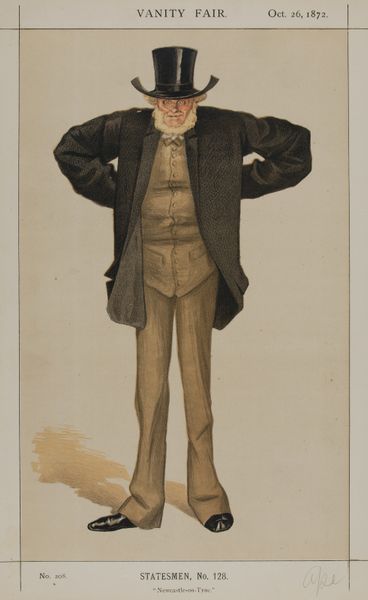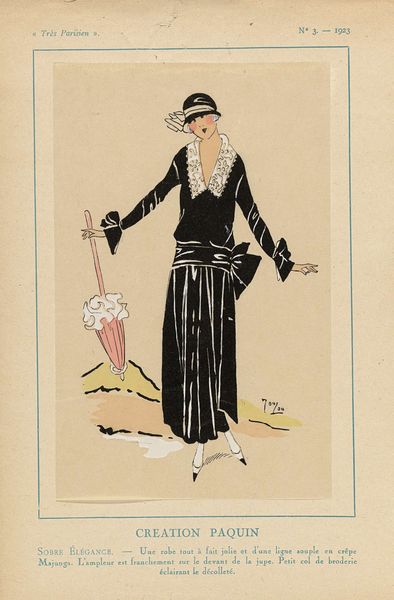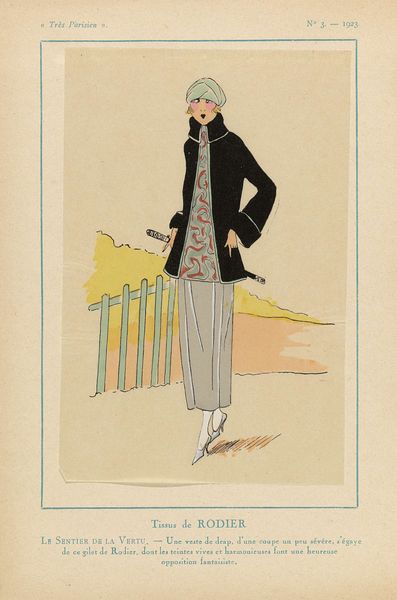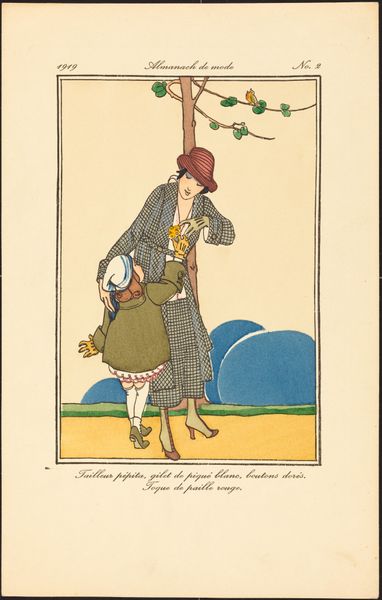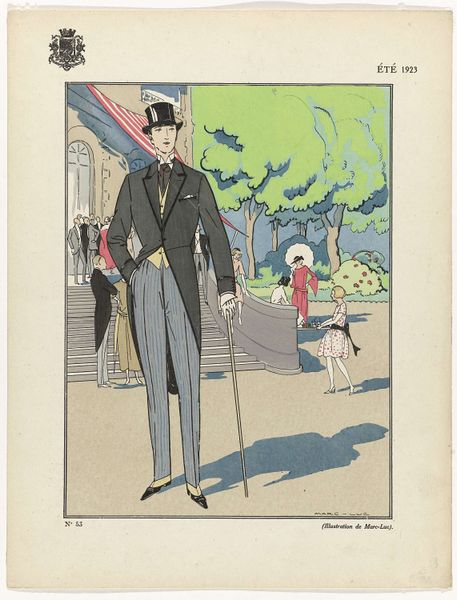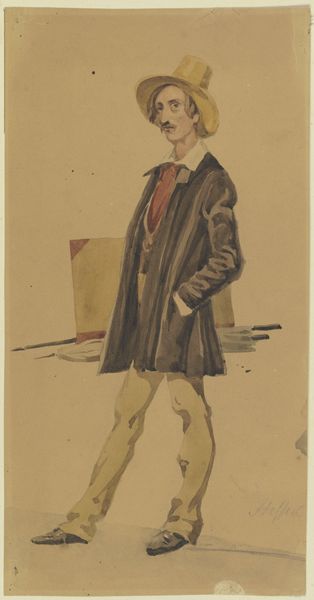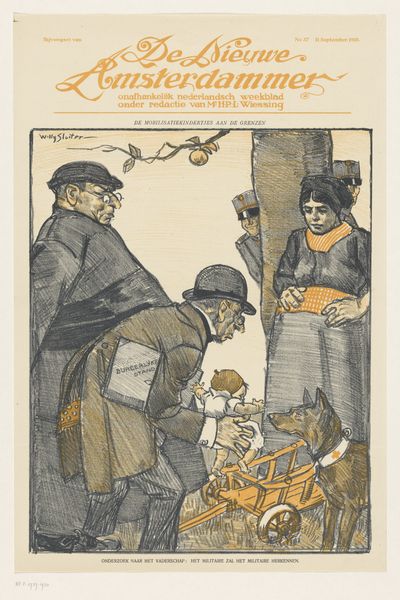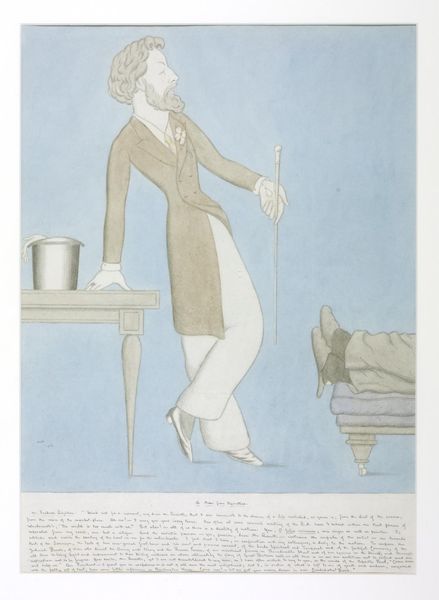
Copyright: Public Domain: Artvee
Curator: Edward Penfield’s poster, *Harper’s April ‘98,* greets us. The date is 1898, so think fin-de-siècle America! What's your immediate reaction? Editor: I'm struck by the sense of confident ease—the poster's palette and composition exude an atmosphere of upper-class leisure. Is this guy about to leisurely hit a round while others work around him? Curator: Precisely. Notice the bold simplicity. Penfield flattens forms, almost like Japanese woodblock prints that were extremely popular at this time. Note the graphic clarity of the golfer in the foreground, posed with a stance that mimics the angles throughout the work, standing in contrast with the farm scene that recedes behind him. Editor: This immediately places him within the American socio-economic landscape of the 1890s, doesn’t it? A time rife with immense industrial expansion, which created the very economic disparities made apparent by Penfield's artistic decisions. His posture communicates his social status in a way that subtly undermines the so-called “Gilded Age” that left so many behind. Curator: Interesting take. His physical dominance over the scene creates an aesthetically pleasing tension. But, let's return to the technical aspects: The color palette – muted greens, blues, and browns – unifies the diverse elements, ensuring legibility. He carefully employs line, especially the outline of the golfer. Editor: These clean lines are worth a closer look, especially when placed beside the rural workers to the left—suggesting stark delineations between societal classes, all but ignored, symbolized here in Penfield's design. His choices illustrate themes relevant not only in 1898 but that resonate across time, don’t you think? Curator: The image possesses lasting impact, undoubtedly. The formal harmony communicates the period's ethos of idealized leisure so, despite whatever critique we may interpret now, as a commercial advertisement, this is very effective. Editor: Effective yes, but in hindsight, the effectiveness also opens it to critical perspectives about turn-of-the-century social imbalance. Perhaps, like many great works, its enduring quality is not about technical aesthetics alone, but its openness to such reflection.
Comments
No comments
Be the first to comment and join the conversation on the ultimate creative platform.
